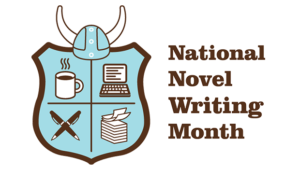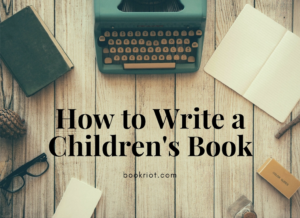
How to Write a Children’s Book
If books are magic, then children’s books are an extra special brand of magic. The books we read as kids don’t just stick with us, they form who we are and what we believe and how we see the world. Writing a children’s book is a calling, but learning how to write a children’s book is also a very long process with nitty-gritty, non-magical details—and it’s full of variables. That’s even before you get to the published books, and all the magical and non-magical details for getting there. Consider this your guide for how to write a children’s book, especially for first-timers and those just getting started.
How to write a children’s book: 10 steps
No two journeys are exactly the same, but if you’re an aspiring children’s book writer, here is a rough outline of how to write a children’s book — from your initial idea to working with publishers!
- Read a lot
- Crack open that notebook and get to work
- Be persistent
- Celebrate! Then revise
- Bring in other eyes
- Do your research!
- Craft a killer query
- Cultivate patience
- Cultivate some more patience, but also keep writing
- Work with your editor
Let’s look at each of these in (lots) more detail.
Step 1. Read a LOT.
In order to learn how to write a children’s book, you have to know what a good children’s book looks like. Don’t just read, though—read critically. Identify the moving parts of the story and try to pinpoint the moments that make you laugh, make you cry, make you roll your eyes; analyze how the author does it. All writers learn by example at first, and these published books will be your best teachers.
You should also make a point of seeking out good books for children. Good is a subjective term, and we could debate what qualifies a good book until we’re dead, but what I mean here is find books that move kids and move you because they get it right. You may learn something about craft from a mediocre book (i.e. what not to do), but you will learn more from quality books. Check awards lists, but don’t limit yourself to them. Seek out a children’s librarian or plunder the Book Riot archives for recommendations.
Step 2. Crack open that notebook and get to work.
Writers’ processes vary, but at a certain point you have to stop thinking about your story and start putting your words on the page. The leap can be a little scary because no matter how much you think about your story, I absolutely guarantee that what you write on the page will not be as shimmery as what’s in your head. Don’t panic. No published book is a first draft.
I find brainstorming, outlining, and first drafting longhand a great place to start. Writing in a notebook gives you permission to get messy, cross things out, and experiment. As you figure out what works for you, you can switch over to your preferred writing medium—Word document, Scrivener app, typewriter, whatever—and write away!
Step 3. Be persistent.
Eventually, your energy will dwindle. Distractions will pop up. You might hit a wall or write yourself into a corner or become convinced that what you’re writing is absolute crap and no one will ever want to read it. This is completely normal, and not insurmountable. I promise.

Step 4. Celebrate! Then revise.
YAY YOU DID IT YOU WROTE A DRAFT! Take a moment and celebrate the fact that you wrote a novel. Take the night off, take a nap, take a drink—whatever. But don’t get too carried away, because you are not done, my friend. Far from it. Now it’s time to revise.
Revision is a key part of the process, so embrace it. Remember all that reading from Step 1? Now is your time to be firm with yourself, and read your work like a reader. Take a critical look at what doesn’t work—and what does. Oftentimes new writers tend to be really harsh on themselves, but I believe it’s just as important to give yourself credit for the things you do well in your drafts. What you do well will give you energy to get through the arduous process of re-evaluating and revising, and make the inevitable cutting, deleting, and re-writing a little less painful.
Step 5. Bring in other eyes.
Sharing your work is scary, but absolutely necessary. Even the best, most experienced writers have blind spots when it comes to their own work, and first readers are absolutely essential in helping point those out. They can be close friends or family members, but I generally advise against this, unless your close friends or family members are also readers and writers who can be very honest with you.
Finding quality readers of your work is one of the biggest hurdles for new writers. You need someone who is going to challenge you and your writing, who sees what you’re trying to do on the page, who is actually able to offer you strategies and advice that will work. You can find this in critique groups, both in person and online, and by attending workshops and classes. Some writers even decide to pursue degrees in writing, such as an MFA.

No matter which avenue you pursue, do not skip this step. Receiving and applying feedback to your book can be difficult, but is absolutely essential if you wish to publish. It doesn’t stop being scary, but it does become easier with time.
Step 6. Do your research!
You’ve written a novel! You’ve revised it, gotten feedback from a trusted band of readers, revised it some more, revised it again, and polished it ‘til it shines. Everyone agrees it’s time for you to send it out into the world.
Now it’s research time.
While there are many valid reasons to pursue independent publishing, for the sake of brevity, I’m focusing on traditional publishing. In order to become traditionally published, you need an agent. A literary agent is necessary because they know the business intimately and will be the best advocate for you and your work. They negotiate with publishing houses on your behalf and help you strategize your career. In return, they take fifteen percent of your earnings. This is a bargain, friends. They do not get paid until you get paid, and they do a heck of a lot of work.
Finding agents of children’s literature is not difficult. Finding the right one for you takes time and work. I recommend starting by identifying a kid’s book you admire, or books that you think resemble yours in genre or tone or style. Look in the acknowledgements of those books, and find out who the author’s agent is. Look those people up, find names on Manuscript Wishlist, join QueryTracker, utilize resources available from SCBWI. If these agents have Twitter feeds or blogs, read them. (Don’t pitch agents via these channels! Seriously, don’t do it.) Think of this as reconnaissance, so that you can decide if an agent is someone you would like to work with. There are many amazing agents out there, but some might not be for you. That’s okay! You’ll find ones you’ll click with.
Step 7. Craft a Killer Query.
Once you’ve picked a list of agents you’re interested in, make sure that your work falls within the age group, categories, and genres they represent, and follow their submission guidelines precisely. Some will vary, but all of them require one essential ingredient: the query letter.
Instructions on how to write a query letter are easy to find online—it’s a one page letter of introduction that describes your work. Like your novel, your query letter should be carefully written and revised and you should get feedback on it before it goes out. Let your voice shine through, but be professional. Talk warmly about who your main character is and what they want.
Your job in this query is demonstrate the marketable qualities of your book, but don’t make any grand claims about how much your kid/spouse/critique group loves it, and don’t promise it’ll be the next bestseller—no one can guarantee that.
And finally, make sure to personalize each query!
Step 8. Cultivate patience.
Once you’ve hit send on that query letter, my best advice is to go do something else. Read, write, cook, take your dog for a walk. Basically, do anything but refresh your email one hundred times a day. You’ll hear it said that publishing is a long game, and you’ll truly understand this once you hit this step. Most agents will respond within eight weeks. Some agents won’t respond at all. It’s nothing personal—the volume of mail they receive each day makes it impossible for them to respond to every query. Some agents may request that you send them the full manuscript, and you’ll begin the waiting process all over. Be patient.
After an agent has read your book, you may receive notes from an agent and an offer to re-submit after revisions have been made. This is a good sign! Agents don’t take the time to offer personalized feedback unless they see potential in the work. However, you are not obligated to undertake these revisions if they don’t ring true with you. Finding an agent is a little like dating—if you get an ick vibe, bail. There are other fish in the sea.
You will likely receive rejections. You’re allowed to mourn, but not dwell. Keep being patient, go back, repeat Steps 1-6 as many times as necessary. Keep writing. This a process that you absolutely should not rush. Any professional writer will tell you that a bad agent is worse than no agent at all.
If you receive an offer, YAY! Weigh your options, talk to the offering agent, ask all your burning questions. When you accept an offer of representation, it needs to be from someone who gets you and your work, who is excited to work with you past your current novel, and who has ideas about how to proceed with your career.
Step 9. Cultivate some more patience, but also keep writing.
Agents work differently, so how you proceed will depend on your agent, their strategy for your book, and even the current market. Some agents are very editorial and may ask you to revise (again, I know) before sending the book to editors. When it’s ready to go on submission, an agent generally crafts a pitch and sends your book to a select list of editors. Then comes more waiting.
This is a very good time to start a new project, and to do all that is humanly possible to forget that your book is currently on submission. Easier said than done, I know. But like agents, editors work very slowly due to the high volume of work on their desks. Any story you might hear about books selling in a matter of weeks should be treated as an exception, not the rule. Remember what I said about publishing being a long game? Yeah, looooooooooong.
Some editors might come back with what’s called a Revise and Resubmit offer, or an R&R. They’ll give feedback on certain aspects of the novel, and will offer to read it again if you revise. You should discuss this with your agent, but again, you’re not obligated to take this offer if it doesn’t sit right with you. It’s not a guarantee of a book deal, but definitely a sign that you are on the right track.
It’s a hard truth that your first book might not sell. You can write an amazing book for children, revise it, snag an agent who loves it and your writing, and yet have your book flounder on submission for a variety of reasons. The market might not be ready for your book. An editor might not connect with it, the timing might be bad. It will seem unfair, because you don’t have any control over these variables, but know that it happens much more frequently than you might think. I’ve been through it myself and the only thing that makes it better is writing the next book.
But if you don’t give up, you will eventually write a book that an editor will fall in love with and make an offer on. And when that happens, celebrate!
Step 10. Work with Your editor! And more patience!
Once you’ve received an offer and your agent has negotiated the terms and the contract has been signed, you’ll go through the editing process with your editor. What this looks like depends on the practices of the publishing house, the editor, and your book, but can take another year or two. Publishing moves slowly in part because there are lots of eyes on your work during this step. Revision with editors, copyediting, formatting and design, first pass pages, final pass pages…and if you have written a picture book, you have to factor in time for the illustrator to illustrate your story and go through his or her own process with the art director.
But finally, you’ll be close. Advanced reading copies are printed, marketing and publicity plans are made, and the book goes to press until finally…
Step 11. YOU HAVE A BOOK!
Congratulations! Your shiny book is in the hands of kids and teachers and librarians and booksellers everywhere!
Are you a children’s book writer or aspiring writer? Do you write middle grade or young adult books? Share your advice that helped you learn how to write a children’s book in the comments! Look for even more inspiration in our big ol’ list of 100 books on writing and the writing life here.















